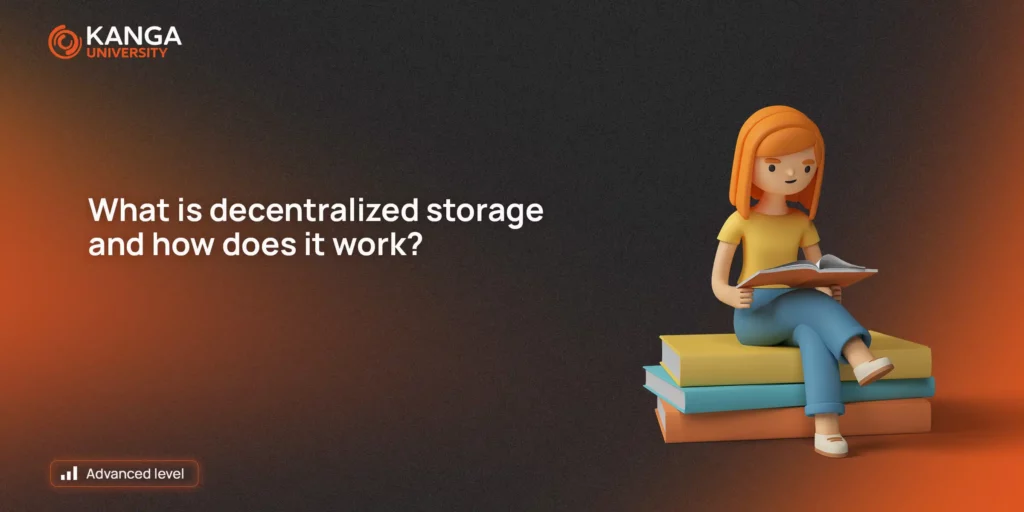
Decentralised storage is another alternative, to centralised cloud storage. It is where data or files are stored on a decentralised network, in multiple locations, by users or groups of users.
Importantly, the servers used for decentralised storage are hosted by people rather than a single company, making your data even more secure. Anyone can join decentralised storage.
We find more than a dozen reasons why decentralised storagewill replace its centralised form:
- Data breach problems. Over the past few years, every centralised provider of storage has had a problem with a data breach of their users.
- Failures and vulnerability to hacking and virus attacks. By storing your files in centralised clouds you expose them to DDoS attacks.
- Lack of ownership. Don’t kid yourself – once you’ve uploaded data or files to centralised storage, it’s no longer just yours.
- Censorship and monitoring of the data you share.
- Rising costs of using centralised storage.
To solve the above problems, an alternative has emerged – decentralised storage.What is it and how does it work? You will find out in our lesson today!
How does decentralised storage work?
In decentralised storage files are stored on multiple computers (nodes). If you need to retrieve a file from such a network, you ask for it. You then retrieve chunks of the file from other participants in the network and end up with the full file.
Decentralised storage appropriately encrypts the file you send so that others cannot read it. Your data and file are secure, inaccessible to third parties. You, as the owner of the file, receive the encryption key, which is a full guarantee that the files are only read by you. What’s more, thanks to sharding (i.e. splitting the file into several parts that are stored on several nodes), no person has the file in question in its entirety. This is an extra layer of protection and security for your data.
What else is worth knowing? Centralised storage stores data at a central point, which is often based on your current location. This causes bandwidth issues – the more users in a location, the lower the bandwidth of the network. This causes data transfer problems. Decentralised storage removes this problem. Peer devices are responsible for distributing and transferring data, independent of the location you are currently in. The result? Higher transfer speeds.
Advantages of decentralised storage
First and foremost, low storage costs. With such a huge number of nodes hosting our data, the amount of storage available to us is much greater. This simultaneously reduces costs, compared to centralised storage.
Greater speed, thanks to the use of P2P, blockchain technology and a central server. Multiple copies are stored on different nodes, and this leads to more copies. The result? Faster downloads.
Security and privacy, thanks to data encryption. Thanks to keys and data fragmentation, no one can access your files. Only you know what you are storing.
Minimal risk of file loss. With hundreds of nodes participating in decentralised storage, copies of the data will still be stored in the event of transmission errors.
Decentralised storage providers
- Filecoin. It has gained popularity through the use of IPFS. Filecoin focuses on storing and distributing data, although it is more focused on storing things.
- PPIO. The Project is building a decentralised platform for data storage and distribution. The project team is mainly focusing on the application layers, designed for video solutions (video on demand and broadcast).
- Tardigrade. A Platform built on Ethereum, designed primarily for data storage. Interestingly, encryption and file sharing lies on the client side.
- Swarm. Decentralised storage platform, based on Ethereum Web3.
- Sia. Not to be confused with this singer. A platform that wants to provide a backbone storage layer for the internet.
In addition to the above platforms, the decentralised storage industry also includes projects such as Lambda, Genaro, TOP Network, TrustSQl, 0Chain, ThunderChain, ArchonCloud and Internxt.
What stands in the way of mass adoption of decentralised storage?
Trust. Companies, as well as customers, can be distrustful of this form of data and file storage. All because of the lack of liability, in case of data loss.
Performance that will make mass migration of users from centralised storage more difficult.
Service. In order for decentralised storage to be generally accepted, the level of service must be significantly higher than that currently offered by the market.
Summary
Decentralised storageis still developing. It is not yet massively widespread, but it will certainly contribute to the development of Web3. Every user wants a cheaper, more efficient and more secure alternative.
Decentralised storage will solve key issues, but it is still its centralised counterpart that has more supporters.
Complete today’s lesson!